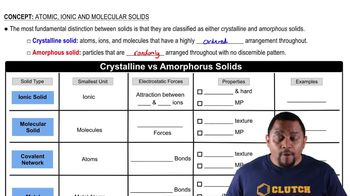Here are the essential concepts you must grasp in order to answer the question correctly.
Atomic Structure
Atoms consist of protons, neutrons, and electrons. Protons are positively charged particles found in the nucleus, neutrons are neutral particles also in the nucleus, and electrons are negatively charged particles that orbit the nucleus. The number of protons defines the element, while the number of neutrons can vary, leading to different isotopes.
Recommended video:
Isotopes
Isotopes are variants of a particular chemical element that have the same number of protons but different numbers of neutrons. This difference in neutron count affects the atomic mass but not the chemical properties of the element. For example, carbon-12 and carbon-14 are isotopes of carbon, with 6 and 8 neutrons, respectively.
Recommended video:
Ionic and Neutral Atoms
Neutral atoms have an equal number of protons and electrons, resulting in no overall charge. In contrast, ions are charged atoms that have lost or gained electrons, leading to a difference in the number of protons and electrons. Understanding the balance of these particles is crucial for determining the identity and charge of an atom.
Recommended video:
Atomic, Ionic and Molecular Solids Concept 1
 Verified step by step guidance
Verified step by step guidance Verified Solution
Verified Solution

